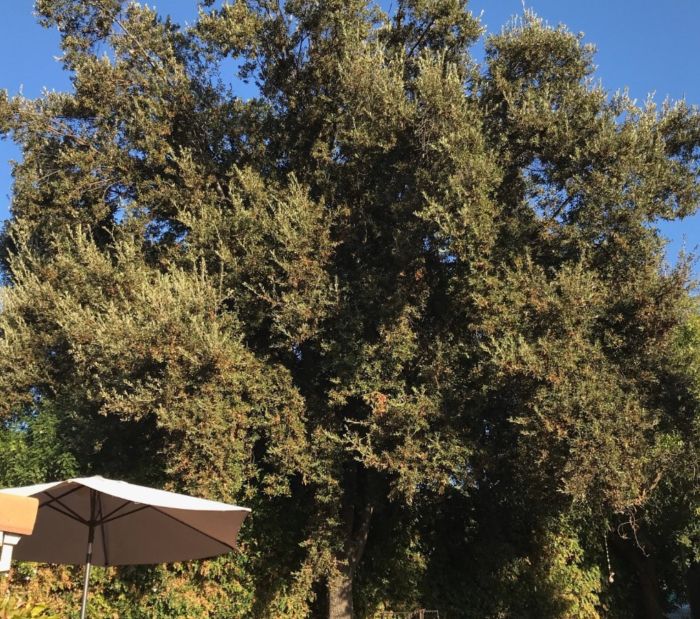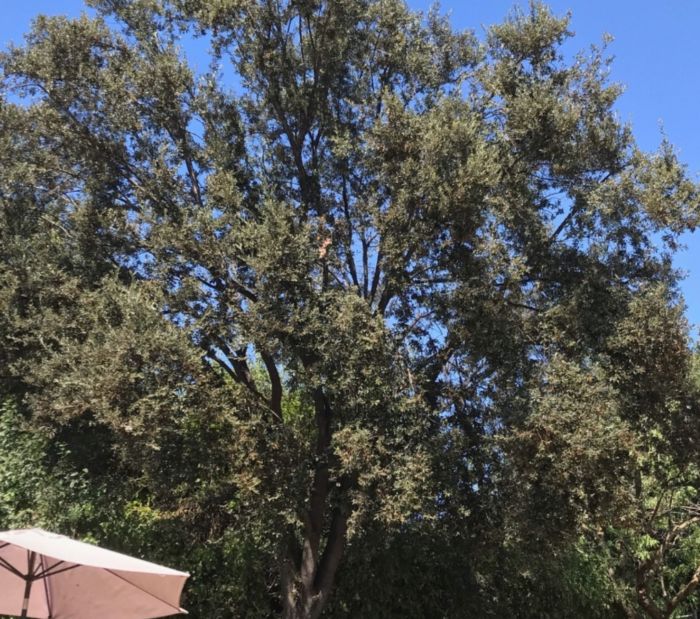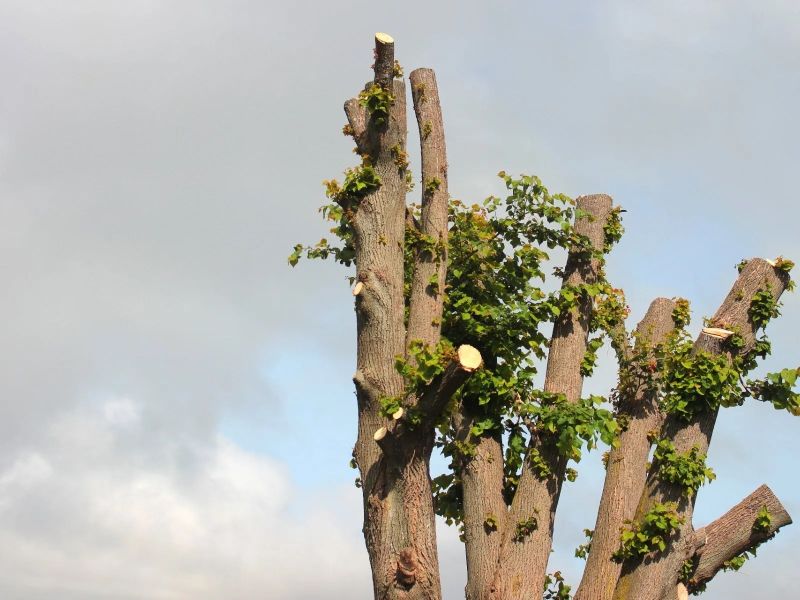Tree trimming can help the health and aesthetic of your trees, but if done incorrectly, it can cause more harm than good. Use this guide to understand the benefits of trimming, common mistakes to avoid, and the correct ways to do tree pruning and trimming!
Benefits of Tree Trimming
Tree trimming can be more than just about aesthetics. Here are the main benefits of tree trimming:
– Promotes Tree Health: Trimming removes dead or decaying branches, reducing the risk of disease and pest infestation.
– Enhances Tree Structure: Pruning helps trees maintain a strong structure, preventing branches from growing in awkward directions or becoming too heavy and dangerous.
– Improves Safety: Regular trimming reduces the risk of falling branches, which can be hazardous to people, buildings, and vehicles.
– Boosts Aesthetic Appeal: Pruning helps maintain the desired shape and appearance of your tree, enhancing landscape beauty and value.

Prune Before

Prune After
How to Trim a Tree: Trimming and Pruning Mistakes to Avoid
Tree trimming, while beneficial, can go wrong if done improperly. Here are some common mistakes you should avoid:
– Topping Trees: Cutting off the tops of trees can lead to weak regrowth and increase susceptibility to disease.
– Stub Cuts: Leaving large stubs behind after trimming can invite pests and decay, harming the tree.
– Pruning at the Wrong Time: Don’t trim during the worst time to prune trees. Pruning during the wrong season can affect tree health and growth.
– Improper Cutting Techniques: Cutting too close to the trunk or using a poor angle can damage the tree’s ability to heal.
Don’t Chop Off Tree Tops
One of the most damaging practices in tree trimming is topping. Topping, or cutting off the main leader or large branches at the top of the tree, weakens, stresses, and starves the tree. Sudden removal of so much foliage reduces the tree’s ability to make sugars and often forces it to regrow multiple smaller – and weaker! – branches. This not only ruins the natural structure of the tree but also creates new growth that’s more prone to failure. Additionally, the large cuts left by topping heal very slowly, leaving the tree vulnerable to decay, disease, and pests.

Only Prune Trees at Specific Times
– Disease Prevention: Trees like oak are susceptible to disease when pruned during the growing season. Pruning during the dormant season can reduce the risk of infections.
– Boost Fruit or Flower Production: Fruit-bearing trees, such as apple or cherry, can see an increase in yield and blooms when pruned at the right time. For many, this means pruning before the growing season.
If your tree has broken or hazardous branches, the best time to prune is immediately to prevent accidents or further damage!
Proper Pruning Techniques
The art of tree pruning is knowing how to make clean, healthy cuts that won’t harm the tree. One of the most important techniques is the “three-point cut method” to prevent bark tearing and ensure a clean cut:
- First Cut: Make a small undercut a few inches away from where you intend to make your final cut. This prevents the branch from splitting when you make the second cut.
- Second Cut: Move a few inches farther along the branch and cut all the way through. This removes the bulk of the branch.
- Final Cut: Make the last cut just outside the branch collar (the swollen area where the branch meets the trunk). This allows the tree to heal properly without leaving a stub.
Avoid making stub cuts (leaving a portion of the branch behind) or flush cuts (cutting too close to the trunk), as both can lead to decay and prevent proper healing. Learn about proper ways to prune trees with our pruning definitions!
Don’t Over-Prune Trees
Over-pruning trees, whether through topping, lion’s tailing (removing too many inner branches), or over-thinning (removing too many branches), can weaken a tree’s structure and health. When a tree is over-pruned, it can struggle to regrow and may become more susceptible to wind damage and disease.
Lion’s tailing removes too much of the interior growth, leaving only the outermost foliage. This puts too much weight at the ends of the branches, causing them to break easily during storms or heavy winds. Proper pruning ensures a balanced structure and reduces stress on the tree.
Take Care of Clustered Branches
Clustered branches can cause competition for nutrients, sunlight, and space, weakening the overall health of the tree. When branches grow too closely together, they might rub against each other, causing wounds that invite pests and diseases. Look for crossing or rubbing branches and remove the weaker ones. It’s important to selectively prune crowded areas, leaving enough space for air circulation, sunlight, and healthy growth.
Proper Tools in Trimming and Pruning Trees
Here are some tools to have on hand so that tree trimming is easier for you and better for the tree:
– Pruning Shears: Best for smaller branches up to ¾ inch in diameter.
– Loppers: Ideal for cutting branches up to 1½ inches in diameter.
– Pruning Saw: Necessary for larger branches that can’t be cut with shears or loppers.
– Pole Pruners: For high branches that are out of reach.
– Sharpener: Keep your tools sharp to make clean, smooth cuts.
Make sure to sanitize your tools after trimming diseased trees to avoid spreading pathogens.
How Much to Trim a Tree Without Killing It
As a general rule, you should never remove more than 25% of the tree’s living foliage in a single session. Over-pruning can leave the tree vulnerable and unable to produce enough energy through photosynthesis.
Mature trees are less tolerant of heavy pruning than younger ones. In mature trees, try to limit pruning to 15-20%, while younger trees can tolerate up to 25%. When in doubt, it’s always better to trim less rather than more.
Call an Expert
While DIY tree trimming is possible with the right knowledge and tools, there are times when professional help is necessary. Large trees, trees with hazardous branches, or those near power lines should always be handled by certified arborists.
Professionals have the expertise to assess your tree’s health, make the proper cuts, and use specialized equipment safely. If you’re unsure about how to trim your tree or need assistance, don’t hesitate to reach out to us!





